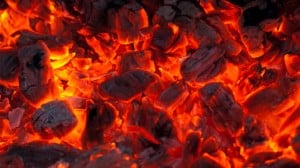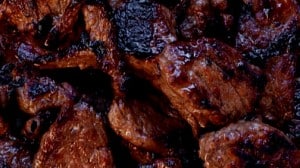By Mike Louviere
By late November, many deer hunters have already invested hundreds of dollars on the hunting rights on a parcel of land that they will refer to as “the deer camp.” The land owner has given them exclusive rights to hunt on his land.
The hunter has invested hundreds of dollars going to the “deer camp” several times before opening day and cleaning out the shack on the property that he will sleep and eat in on the days he hunts. If there’s an outhouse, it will have been cleaned of red wasps, yellow jackets, spiders and assorted snakes.
The hunter will also have worn out two or three chainsaws clearing out shooting lanes in front of the deer stands. Somewhere in front of his stands, he will have placed automatic feeders which have cost him hundreds of dollars, and filled the feeders with “deer corn” — a food that is inedible except to the deer; food that may have cost him a few hundred dollars.
All of this is done in the hope that he will kill a deer, which he will pay to have processed. He considers this “free meat.” When it is cooked, he proudly proclaims, “this is great — tastes just like beef.”
It goes without saying that the cost of his rifles can easily equal the investment required for five or six college degrees. For a hunter to be successful, he needs a rifle with a telescopic sight that will shoot the lashes off a gnat’s eye at a thousand yards. No less will do for the hunter providing food for his family.
However, there are those days when the deer will not come to the corn slung out of the feeder. On those days, to fill the family larder, the deer hunter must indeed hunt. He will need to hone his observation skills to be able to spot prospective game at 60 miles per hour.
On those days, for the deer hunter to find game, he will have to find roadkill.
The best roadkill is that which has been hit and knocked out of the traffic lanes. Whether this is large or small game, there will usually be only a large bruised area that can be easily cut away and discarded. Broken bones are usually not much of a problem. If the roadkill has remained in the traffic lanes, there is the likelihood of smashed organs and crushed bones. In this case, care has to be taken to ensure freshness and the elimination of bone splinters.
Roadkill needs to be “sniff tested” for freshness; any doubtful odor means that it may not be as fresh as it appears. If there’s any presence of maggots or blowflies, don’t use the roadkill. Beak marks from buzzards are also a reason to pass this game by and keep “hunting.”
Roadkill Processing
The following is for processing large game, such as deer. For smaller game, squirrels, rabbits, armadillo, opossum, and coons, cut seasoning quantities and cooking time in half.
The game should be skinned as soon as possible to allow the meat to begin to cool. If the hunter and his family appreciate organs, such as the liver and the heart, they need to be removed and placed on ice as soon as possible.
Not many hunters will take roadkilled game to a professional processor. The ridicule of taking a roadkilled deer with a Goodyear or Michelin tread mark to a game processor often leaves the hunter slinking out the door with his tail between his legs. It’s best he process the game at home.
Once the game is butchered, it probably will not appear to have been professionally processed; it will more than likely simply have been hacked into pieces.
Next, the decision about cooking must be made. Most wives insist that roadkill be cooked outside due to a stronger than usual “gamey” odor.
Venison roast is usually seasoned rather highly. The meat can be pierced in a dozen or so places with five or six cloves of garlic and a peppermint stick candy stuffed in each spot.
For marinade for a six-pound roast, use two pounds of black pepper, 18 chopped and crushed jalapeño peppers, half a pound of oregano, and a quarter pound of cinnamon mixed in a gallon of red cider vinegar, eight cans of whatever beer is on sale, one bottle of Big Red soda pop, and a cup of any off- the-shelf barbeque sauce. Usually this meat and marinade will have to be placed in three garbage bags and left overnight in a washtub of ice in the back yard. Wives aren’t receptive to roadkill marinading in the family refrigerator.
Cooking Roadkill
Remove the meat from the garbage bags and lightly pat it dry with a microfiber car wiping cloth. By this time, the gas grill should be at high heat or the fire should be down to a large bed of red coals. Either cooking method is fine as long as the heat is kept at a very high level.
The meat can be laid directly on the coals. The pepper mix will form a crust that will keep the ashes out of the meat.
If a grill is used, the rack should be made of tungsten due to the sometimes high acid content if the roadkilling was on an asphalt surface.
Mix one pound of Kosher salt, one pound of red pepper, one pound of black pepper, one pound of white pepper, and one teaspoon of seafood seasoning to create your rub. Heavily coat the meat.
Drive a round white oak stake through the center of the meat, alongside the bone if one is present.
Cook on the grill or fire, rotating often, for six or seven hours.
Serving Roadkill
Remove the meat from the fire; remove the stake from the meat; and allow the meat to cool to nearly room temperature.
Discard the meat and cut the stake into serving size pieces; serve with sweet tea and after-dinner mints.
Serves four to six, depending on the size of the stake.















Comments are closed.